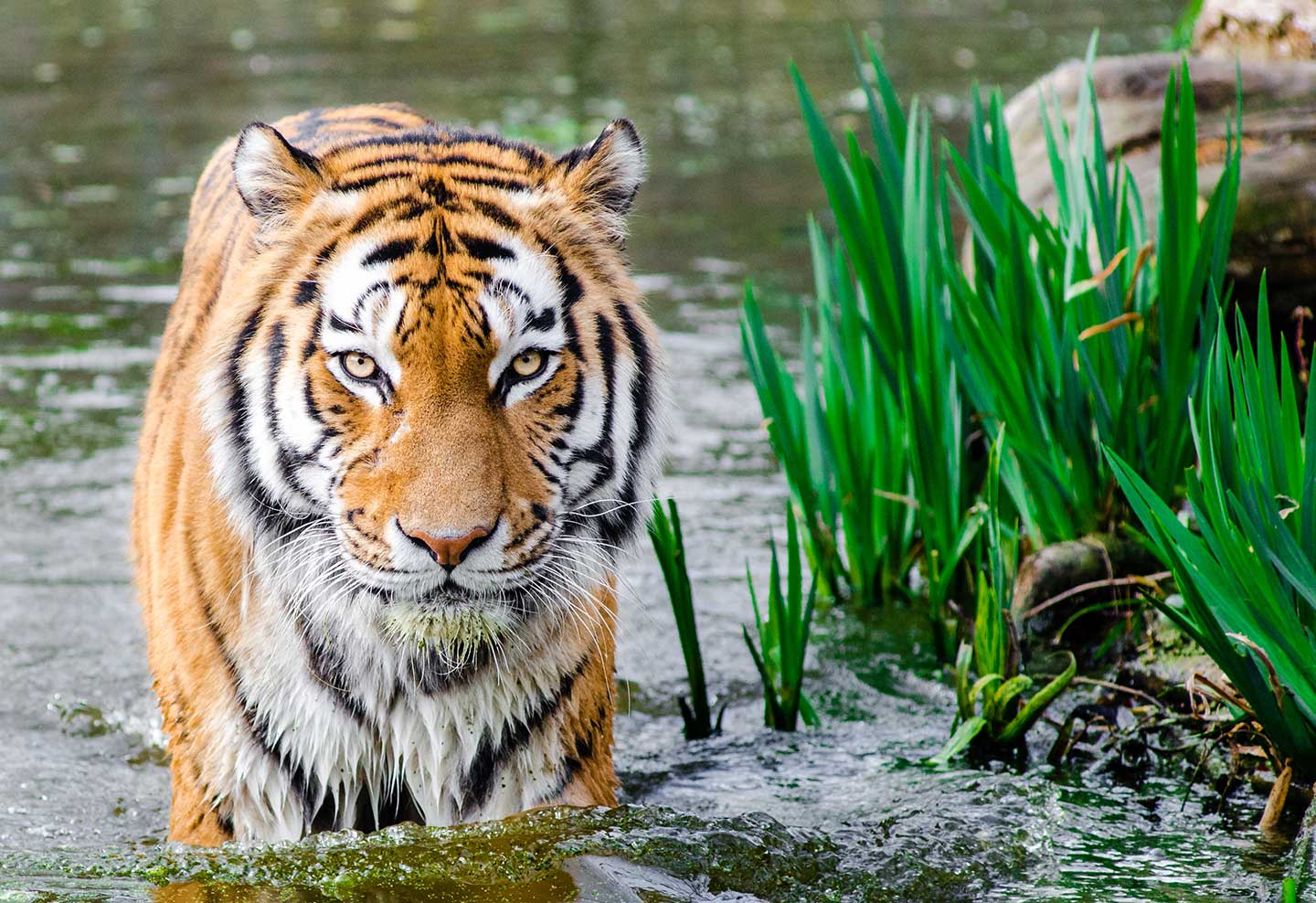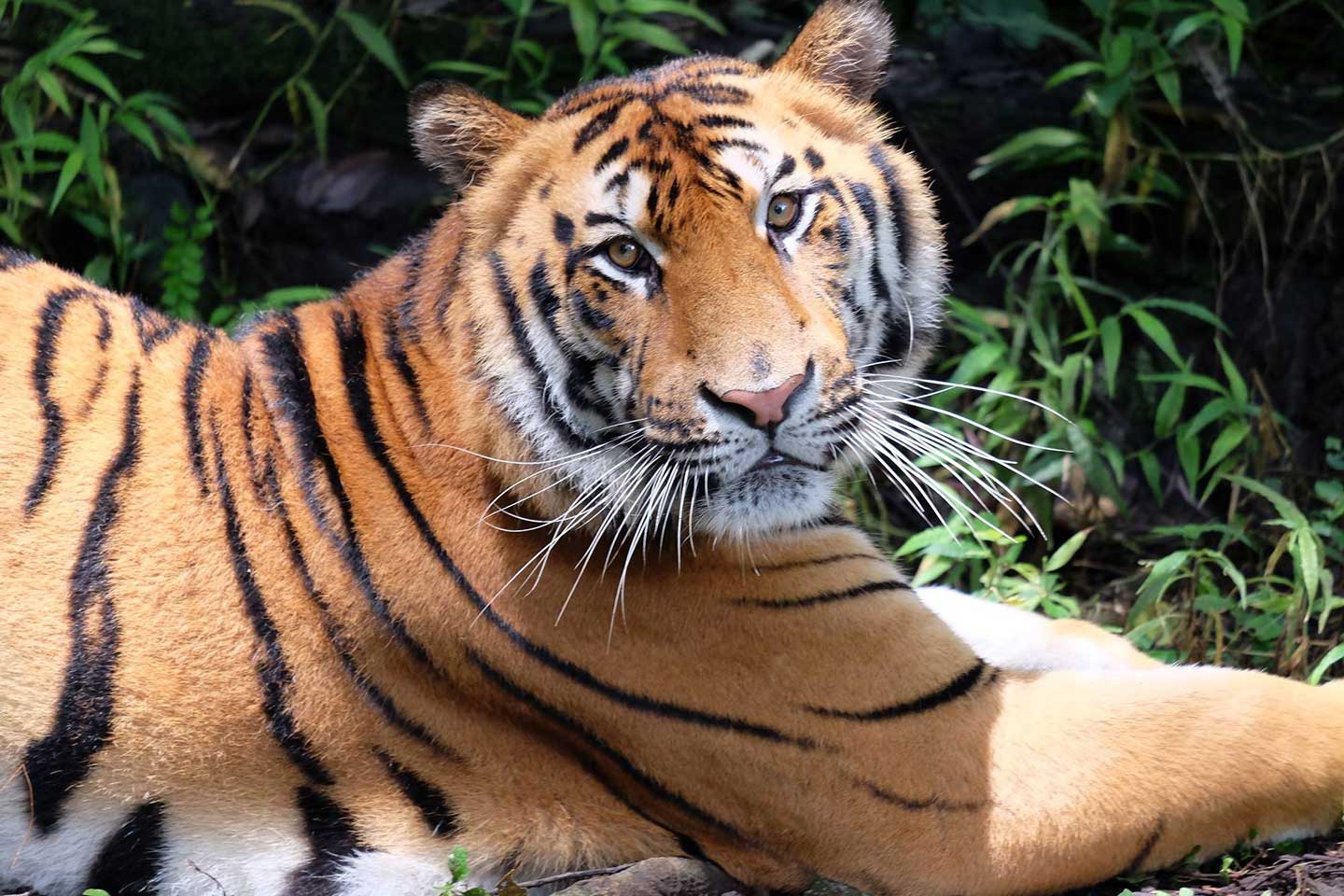
at Taman Safari Bali

at Taman Safari Bali

at Taman Safari Bali
See the Taman Safari Bali!
Tiger are as majestic as they appear. Because the tiger is the largest member of the "big cat" species, as it can weigh up to 350kg. Meanwhile, there are 6 subspecies of tigers in the world - Malayan tiger, South China Tiger, Indochinese Tiger, Sumatran Tiger, Bengal Tiger, and Siberian Tiger.
They usually hunt for food in the late afternoons or at night for larger prey like wild pigs, deer, and, at times, monkeys and even frogs. Tigers need to feed on up to 27 kilograms of meat in one night, but more often they consume up to 6 kilograms of meat during a meal. Meet the tiger of Taman Safari Bali!
How to See The Tiger

See me closer with:
Tiger (Panthera tigris) of Bali Safari
In the past, Indonesia had three subspecies of tigers: Bali, Java, and Sumatran tigers. The Bali tiger was extinct in the 1930s and Java tiger in 1970s. Today, fewer than 400 Sumatran tigers exist. The last of Indonesia's tigers are holding on for survival against deforestation, poaching, and human-tiger conflicts. When humans interfere with the ecosystem, animal habitats are inevitably affected. This has tragically happened and is currently happening to Sumatran tigers, elephants, rhinos and other wildlife.
The conservation team of Taman Safari Bali is actively involved in efforts to build breeding centers equipped with a genome resource bank to prevent further extinction.
More About Our Tigers
| DISTRIBUTION | Asia |
| HABITAT | Tropical broadleaf evergreen forests, freshwater swamp forests |
| HEIGHT | Length: about 2 to 2.4 meters |
| WEIGHT | 80 – 150 kg |
| LIFESPAN | 18 to 25 years |
| THREATS | Poaching and deforestation |
First thing to remember, all tigers are carnivorous and don't feed upon vegetation. Tigers mainly eat wild pigs, antelope, deer, and water buffalo. However, they are also known to hunt sloth bears, leopards, crocodiles and pythons, as well as monkeys and hares.
Taman Safari Indonesia (the founding organization of Bali Safari Park), along with the Ministry of Forestry, PKBSI (Indonesian Zoo Association), and CPSG (Conservation Planning Specialist Group) was selected to build Animal Breeding Center, especially for Sumatran tigers, that is equipped with Genome resource bank where sperm can be stored. The tiger cubs have a superior gen quality to preserve the genetic chaste.
Reintroduction program is plausible when approached in the right direction. Obviously, TSI's involvement is not only in ex situ but also on in situ. Along with PKBSI, TSI has set up the Sumatran Tiger Rescue Team, which roles are to help the Government handle human-tiger conflicts to prevent the killing of both humans and tigers.
Taman Safari Indonesia, TNWC (Tambling Nature Wildlife Conservation), Ministry of Forestry & Environment, and PKBSI altogether managed to release a number of Sumatran tigers in 2008, and in January 2010, released two more to their natural habitat in Bukit Barisan Selatan National Park in Sumatra. Even more in August 2011, one tiger was released at Sembilang National Park and a couple more at Bukit Barisan National Park following in 2015.
Tigers can reach a length of up to 3.3 metres (11 feet) and weigh as much as 300 kilograms (660 pounds).







